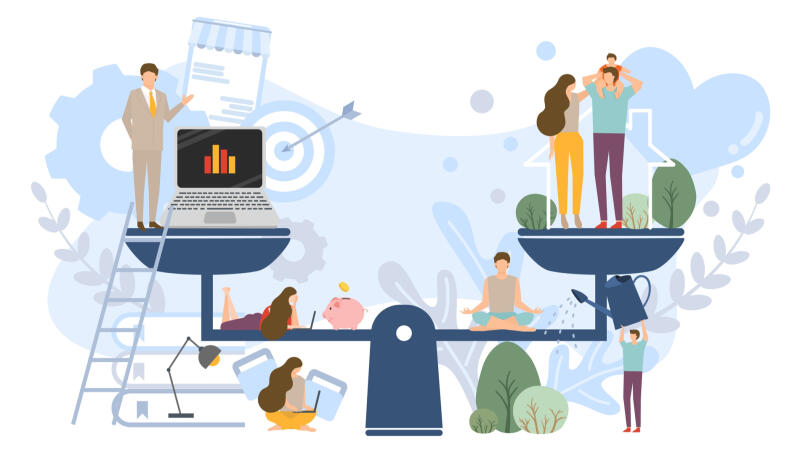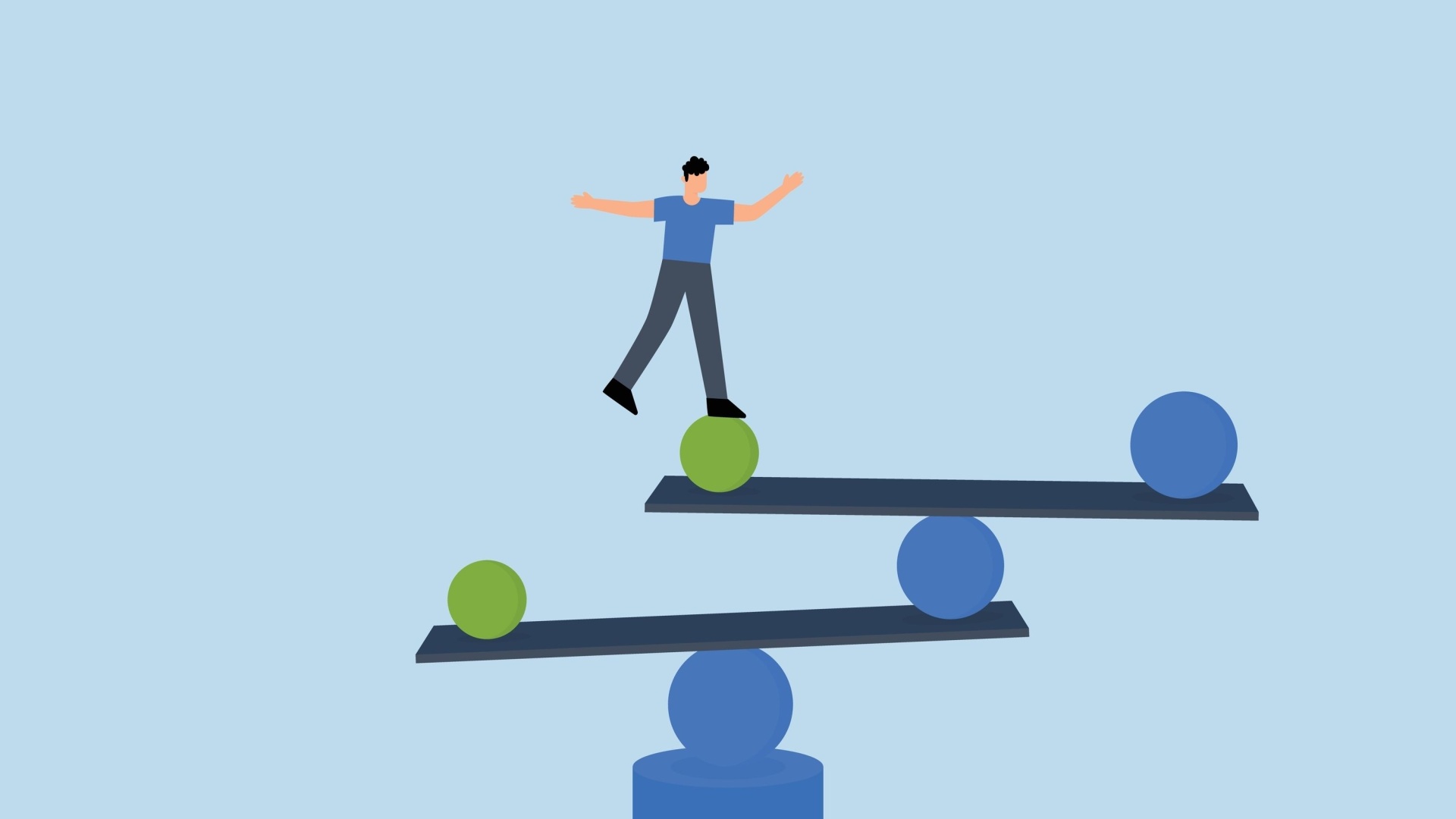Guide: an overall introspection of your career and life using the SWOT technique!
When looking for a job and putting together a CV, it is difficult to accurately assess one's abilities, skills, and strengths.

The same applies to our limitations: it can be difficult to admit that we are somehow inferior to our colleagues and competitors. However, you can use the SWOT technique sensibly and precisely to identify your chances for employment and to participate in career and personal development. This method will help you discover your hidden talents and strongest personality traits, address the shortcomings of your own character, and accurately assess all possible risks on the road to your dream career. Let us find out how SWOT analysis works and why it is considered one of the most effective personal development tools.
What is a SWOT analysis, and how does it work?
SWOT analysis is a particular approach from the field of strategic planning that evaluates external and internal factors that affect your personal development or a company's promotion in the market. This technique can be used in business to analyze the current circumstances, develop a further action plan, and solve various business problems. The abbreviation stands for: strengths (advantages), weaknesses (disadvantages), opportunities (prospects), and threats (risks.)
Using the method of introspection enables you to measure a company's performance or evaluate its new products, and a SWOT analysis will help you identify the following:
-
Strengths. The invaluable qualities, skills, and abilities that give you or your company an advantage and help you achieve your goal.
-
Weaknesses and vulnerabilities. Everyone has flaws. Not everyone can be equally good at everything. Also, in any business, there are certain problems and weaknesses.
-
External circumstances. Most commonly, they cannot be changed, although this does not mean they cannot be used. You will find prospects and opportunities for career growth and business development in external circumstances.
-
External threats. These represent different risks that are extremely challenging to avoid. However, it is important to find a way to keep the business going even in times of crisis or trouble.
Benefits of the SWOT technique

A strategic planning tool like SWOT analysis has many advantages; therefore, it is often used in business and for personal reasons.
Advantages of the SWOT technique:
-
It is straightforward to use.
-
In the fastest time, you can get the answers to all your questions and complete an assessment about the problems of the business or your personality.
-
It does not require additional financial costs.
-
It does not require further research.
The disadvantages of this method:
-
The subjectivity of the SWOT technique. Therefore, it is frequently used in a group and not independently.
-
It has a short expiry date or a brief period of relevance, as the position of a business in the market is volatile. Therefore, it is necessary to have time to adjust a continued development plan for the company before new situations arise.
-
It does not provide accurate analytical information. You will not receive specific numbers after applying SWOT analysis, which is impractical.
Lectera’s Online Courses by topic
How to use SWOT analysis in practice? Here are some examples
The SWOT analysis structure comprises two main sections: internal and external characteristics. Internal factors also include a list of advantages and disadvantages, while external factors include opportunities and risks. Therefore, we recommend downloading a table template or drawing it by hand to make the SWOT analysis more visual.
|
Internal characteristics |
External characteristics |
|
Advantages |
Capabilities |
|
Limitations |
Risks |
To conduct a complete analysis, you must fill in each section in detail, examining the functions of business practices in your company and the competitive market. In the case of introspection, you should study your character, prospects, and risks to achieve your goals.
As an experiment, we will compile a SWOT table for a character assessment

Stage 1. To complete the advantages column, answer the following questions:
-
What are you good at?
-
What can you do to help employers (or the company you work for?)
-
What skills and abilities are most valued in your field?
-
What are you proud of?
-
What are your achievements?
-
Why do people go to you for help?
-
What makes you stand out from the crowd? What is your uniqueness?
The answers to these questions will also help you create a unique CV where only your genuine experience and practical skills are displayed instead of using general or vague wording.
Stage 2. Furthermore, it helps to assess your weaknesses using the same principle for the questions and answers. Realizing your shortcomings enables you to minimize them. The list should indicate the skills and competencies you lack, gaps in knowledge, and inconsistencies with the demands of your desired job vacancy. Questions that may help:
-
What character trait would you like to change?
-
What personality traits damage your professional reputation?
-
What habits are holding you back?
-
What irritates your colleagues about you most?
-
What skills and abilities do you not have?
-
What do you want to learn?
-
Where can you have problems and why?
-
What is stopping you from reaching your goal?
Stage 3. Examines external circumstances, the job market, and your chances of finding a job or achieving any other goal. Here, you need to evaluate your own capabilities. To objectively assess your prospects, use the following questions:
-
What could help you reach your goal?
-
What circumstances would be extremely favorable to achieve this?
-
What can you achieve over the coming year?
-
Who can help you do this?
After you analyze your strengths, you will discover new perspectives and opportunities for career or spiritual growth.
Stage 4. Evaluating your chances of success will help you to determine any possible risks. To determine what hazards may arrive on the path to achieving your goal, answer the following questions:
-
What can you influence? And what is out of your control?
-
What makes you anxious?
-
What could prevent you from reaching your goal?
-
What can trigger an identity crisis?
-
What do you have to do to be always in demand as a professional?
-
What happens if you do not reach your goal?
This is the technique of personal SWOT analysis - a process of formulating definite answers to particular questions that can be similar to one another. However, this helps you to look at a problem differently. So, try to answer the questions in as much detail as possible and describe why you think this way and not the other way around.
How to use SWOT analysis for business

Let us explain that SWOT tables can be compiled for the whole company and for a particular project, or even the launch of a new product, development, and innovation in manufacturing.
Stage 1. Questions for drawing up a list of advantages and strengths:
-
Why do customers love this company?
-
Why do investors, suppliers, and property owners prefer to work with us?
-
What is unique about our company?
-
What makes us stand out from other competition?
-
What can we be proud of? What are the accomplishments and achievements of the company?
-
What resources does our company have?
-
What are the advantages of the professionals and employees of our company?
Stage 2. list your limitations with the following questions:
-
What problems does our business have, and what are they related to?
-
What are the main complaints from customers and consumers of our products?
-
Where are we inferior to our competitors?
-
What do our employees dislike?
-
What do our partners dislike?
-
What resources are lacking?
Stage 3. To discover the opportunities and outlook for the further growth of the company, consider the following:
-
What can help the business achieve its goal?
-
What circumstances are required for this?
-
Who can help?
-
What changes and new innovations will help us achieve our goal?
Stage 4. Of course, the most crucial thing for a business is to evaluate possible risks objectively:
-
Who are our competitors, and what advantage do they have?
-
What might force us to close the business?
-
Which suppliers and partners are letting us down?
-
What makes our business profitable?
-
How do we increase our sales profits, and what prevents us from doing this?
-
How do we eliminate risk factors?
When conducting a SWOT analysis, it is essential for a business to be precise and rely not only on subjective opinion, which is achievable through personal research using real facts and analytical data about the condition of your business. However, companies often use the SWOT technique to study their products and explore the competitive market. This is because this planning tool is multifunctional and visually combines information about any organization's internal and external environment, enabling you to identify all its attributes and limitations. In the future, this will help you to prevent these mistakes in developing your own business.
Share this with your friends via:
Latest News

A significant stage in the development of the alternative education system has begun in West Northamptonshire in the UK: the County Council is actively calling on parents, guardians, and trustees to participate in shaping the future of this key area.

Outwoods Primary School in Atherstone, Warwickshire, having experienced deep sadness after the loss of their famous cat, Silla, has found solace in a new pet – a Maine Coon named Aloysius O’Hara.

In modern universities, artificial intelligence, and in particular ChatGPT, is rapidly transforming from a controversial tool into a full-fledged student assistant.

An innovative educational project is gaining momentum in UK primary schools, aiming to change attitudes towards video games.

The Massachusetts Institute of Technology (MIT) presents MIT Learn – a revolutionary online platform that opens a “new front door” to access university knowledge and resources.












 How the Christmas Tree Became the Symbol of the New Year: From Pagan Groves to Sparkling Ornaments
How the Christmas Tree Became the Symbol of the New Year: From Pagan Groves to Sparkling Ornaments
 How to Keep New Year’s Resolutions: A Detailed Guide to Real Change
How to Keep New Year’s Resolutions: A Detailed Guide to Real Change
 6 Life Areas You Have Almost Certainly Never Paid Attention To
6 Life Areas You Have Almost Certainly Never Paid Attention To
 Test. What Winter Dessert Are You?
Test. What Winter Dessert Are You?
 Test: What Kind of Ancient Goddess Are You?
Test: What Kind of Ancient Goddess Are You?
 Test: Which Great Woman Would Invite You for Tea?
Test: Which Great Woman Would Invite You for Tea?
